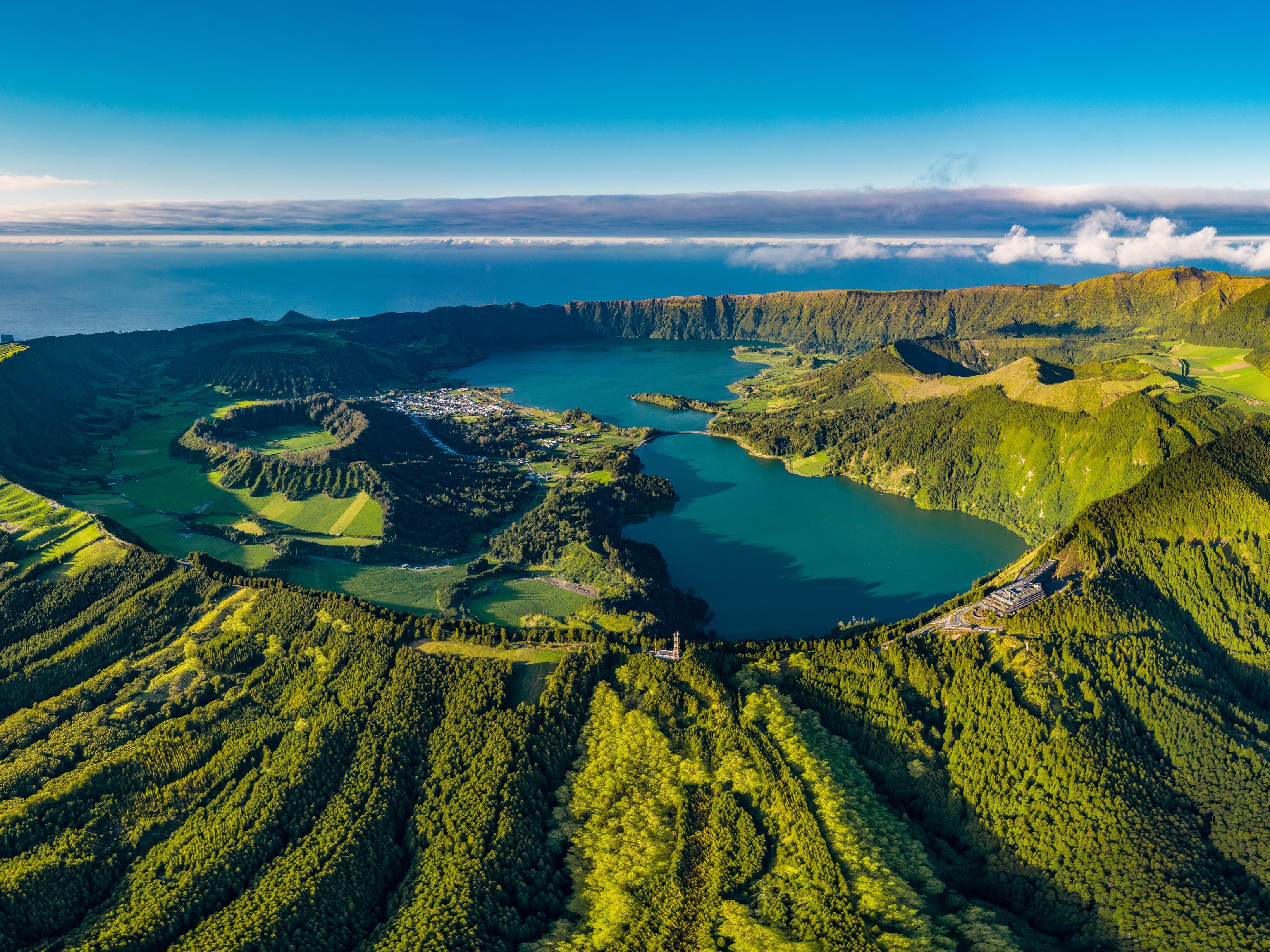
Meet the experimental archaeologist who tested out Stone-Age living on the Thames
The American experimental archaeologist and ancestral skills instructor paddled the Thames River in cowskin canoes to gain insight into Stone Age-style living.
You teach ancestral skills, from basketry to stone tool construction and more. What sparked your interest?
It evolved from being outdoors a lot as a child. My earliest memory of wanting to do this was when I was six. My dad was a scout leader, and he mentioned that cattails were edible. I went to a cow pond, dug up cattail roots and came back chewing one. He told me I was going to get salmonella, then boiled them up for me. As long as I can remember, I’ve been fascinated by finding ways to use the resources around me.
You make leather clothing and gear for your adventures. How did that passion begin?
When I was 11, I wanted a pretty leather dress. Leather was expensive, but I realised people used to tan skins to make it. And bless my parents, they’re very tolerant. I rotted a lot of deer skins before I was successful, but I fell in love with it. The problem-solving aspect of it really appealed to me.
That led to a PhD in ancient hide-tanning techniques.
I did my undergraduate degree in anthropology, then badgered my way into an internship at the Smithsonian. The team there told me the experimental archaeology programme at the University of Exeter was basically custom-made for me. During the course, I realised the academic information on tanning was few and far between. I decided it was a niche I could fill.
What motivated you and ancestral skills instructor Sarah Day to paddle the Thames in Stone Age-style canoes?
From an experimental archaeology perspective, the Thames has been a trading thoroughfare for millennia. This journey was the perfect chance to put the skills we always work on into context. We were interested to see just how low-tech the boats could be, how this kind of canoe would perform on long expeditions, how best to maintain the skins, seams, frame. Also, Sarah and I have made lots of gear. We wanted to test it, to see what works well and what’s not meant for river life. It’s playtime; it’s arts and crafts, but on an expedition like this, it’s also daily living skills.
What were the canoes and equipment you made for the journey like?
There aren’t any archaeological examples of skin boats, really. So, we made something fit to purpose with what would have been available to prehistoric peoples. The canoes are wickerwork of willow and hazel, covered with rawhide cowskin and coated with rendered fat, beeswax and birch tar. Most of the equipment were things that would have been used during those early time periods: fur blankets, a reindeer leather tent, buckskin clothing. We brought dried berries, dried meat; we foraged for greens and cooked in clay pots.
You paddled 136 miles in 12 days. Any challenges?
The wind was our foe. Also, we couldn’t legally have a fire every night to dry the boats out, as Stone Age people would have, which would have improved the performance. But even sopping wet, our boats performed brilliantly, and the maintenance needs were minimal.
You starred on the survival shows Alone and Surviving the Stone Age. How did that change your perspective?
Being able to spend long periods of time putting into practice the skills I teach and have spent a lifetime learning is a privilege. Even more so now, I can speak from personal experience when people query me about various skills. When I’m undertaking research, I can better extrapolate back to how past peoples possibly interacted with their landscapes.
After coming back from filming both shows, I had a bit of weight to regain, but I felt healthier and more alive. There’s a host of benefits to learning ancestral skills and spending time outdoors. It’s given me confidence. There are not many situations where I don’t feel like I would have a really good shot at figuring my way out of them. It’s taught me a lot of patience, and it’s given me a lot of joy over the years.
What about Stone Age-style living appeals to you?
The simplicity, the idea that if I need to do something, I have the tools with which to do it. No one’s saying you need to go back to living in the woods. What we want to do is better understand these skills to better understand our journey as a species. Then, we can translate the best parts of that into modern life.
What’s next for you?
Sarah and I are planning to make our next rawhide boat and paddle the Dordogne River in France in 2024, visiting prehistoric cave sites along the way. My most exciting project, though, is starting a Centre for Ancient Technologies. I’ll be looking for land in Sweden this fall. I envisage it as a teaching venue for ancestral skills and bushcraft, as well as a support venue for experiments and research within experimental archaeology.
To subscribe to National Geographic Traveller (UK) magazine click here. (Available in select countries only).





